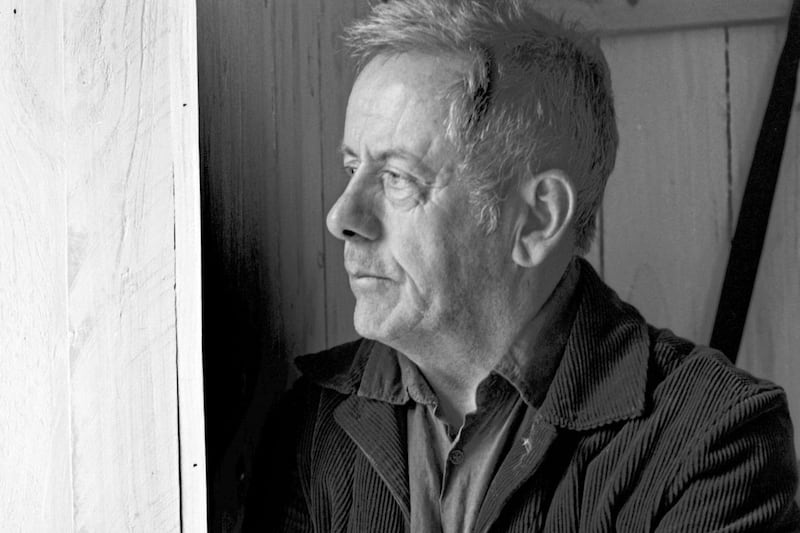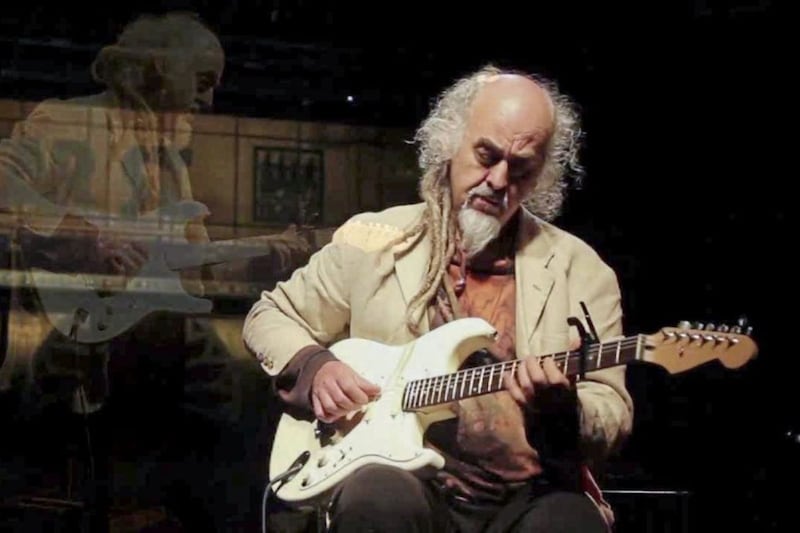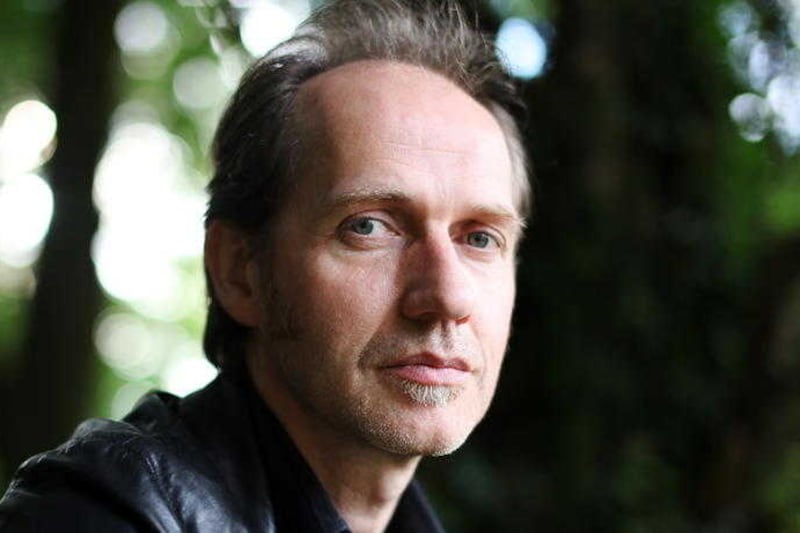IT TAKES a particular type of talent to be able to accompany artists as varied as say, Clannad or Pádraigín Ní Uallachain or Antonio Breschi or, em, Chuck Berry but hey, we all know that former rocker Steve Cooney has been the sidekick of choice for most of our top trad and folk musicians and singers since the Aussie arrived on these shores way back in the early 1980s.
He has appeared on more than 60 albums in the meantime so I ask him if his musical attitude stays the same no matter who he plays with.
“Yes, the philosophy is always the same – try to find the essence of what each artist is aiming to project and support them in that particular quest,” he explains.
“I have no particular axe to grind when I’m accompanying people: when I’m creating my own solo work I do my own thing and I get my personal artistic satisfaction in those contexts.
“When I’m accompanying other people, I aim to support them in the way they’d like to be supported, and if it works I’m happy, because no matter what the style, the standard is always high, and it’s satisfying to be a part of it.
“So in that sense there is no difference in philosophy when working with Pádraigín, Clannad or Chuck Berry… I just have to aim to supply them with the musical support they expect.”
However, Steve’s forthcoming album, Ceol Ársa Cláirsí: Tunes of the Irish Harpers for Solo Guitar, does exactly what is says on the tin, featuring 14 tunes, both rare and well known, as collected by the Armagh-born Edward Bunting in the 19th century.
So what was it that first attracted Steve to the tunes? I suggest they seem to exist in the real world because they are named after real people. They can transport you centuries back to the Big Houses of Ireland and the people who lived in them – and the musicians who serviced them.
“Well that’s true,” Steve agrees. “The tunes on the album were written or collected in the 1600s and 1700s… but I try to get some innate sense of the traditions of the music that go beyond that particular period of history… there’s no doubt in my mind that the Irish harpers were playing amazing music a thousand years ago.
“Geraldus Cambrensis writing in around 1187AD refers to the ‘profusely intricate polyphony’ of the harpers and it’s likely they were highly advanced for hundreds of years before that.
“So elements of those very ancient musical traditions which permeated the tribal structure of Irish society for so long filtered down to us through the harpers of the 17th and 18th centuries."
Of course, a harp can have between 22 and 47 strings so does harp music transfer easily to the six-string guitar? What are the main challenges?
“Well, if you finger pick the guitar, then both instruments have the sounds of strings plucked by fingers, so there is a direct comparison but the challenge is that the guitar has only 20 per cent of the strings of the harp and so the range is more limited.
“I think it’s fair to say that despite the knowledge that has come down to us about the techniques of the ancient harpers, there are also many mysteries about their approaches, and so I’ve tried to be intuitive in my interpretations,” he says.
One of my own favourite tracks on Ceol Ársa Cláirsí is a very interesting version of An Cúilfhoinn. Where did Steve you get this particular version from?
“Well, it’s actually a medley of variations,” he says. “The first and last rounds are taken from a version played by Leitrim piper Hugh O’Beirne in about 1846 for the collector Wiliiam Forde, and published by PW Joyce, who believed this version to be the closest known to the original air.
“The first variation is by the great Kerry harper Con Lyons who composed it in the early 1700s. It was transmitted to Bunting by Denis Ó hAmhsaigh from Magilligan in Co Derry.
“The second variation is by the Donegal fiddler John Doherty. It struck me that John Doherty’s version had similarities to Con Lyons’s, so I put them together. It seems that playing variations on The Cúilfhionn was a tradition of the harpers of that time.”
And what about the other better known tunes such as Tabhair Dom do Lámh and Sí Beag, Sí Mór?
“Well, I took quite a conservative approach to those two tunes. They’ve both been played a lot but I felt it would be good to include them on the album for balance. When I used to do play Sí Beag Sí Mór, I would always play variations, but this time I played it in a very straightforward and uncomplicated manner.
Tabhair Dom Do Lámh is such a great tune, the composition never fails to impress me.
“Written in 1603 by the great Ruaidhrí Dall Ó Cathain from Limavady in Derry, you just let the tune unravel itself…"
Of course, people say Bunting got it wrong in that Irish music at the time of the Harp Festival in 1792 was modal and not written in notes as Bunting did. Any thoughts?
“Yes, it was modal in the sense that it generally used a traditional seven-note scale,” Steve points out. “Bunting was a product of his time, and the musical tastes of that time – with the European influence – included adjusting the harmonic structure of the native style of music, for example with a raised semitone here and there.
“So when he published his piano accompaniments of the tunes that he had collected, there were certain notes that wouldn’t have been in the harpers’ original interpretations, he included them in accordance with the tastes of the time.
“Nonetheless his transcriptions of the tunes themselves were true to the original harping tradition… undistorted.
“We just need to look into the core of his work to see the great value in what he did. I imagine when he accepted the commission to transcribe the music at the 1792 Harpers Assembly in Belfast, he had no notion that it would transform his life... We all owe him a great debt for his accurate and determined preservation of the music from those ancient times.”
:: Ceol Ársa Cláirsí will be out in January. For pre-orders contact ceol.arsa.clairsi@gmail.com





